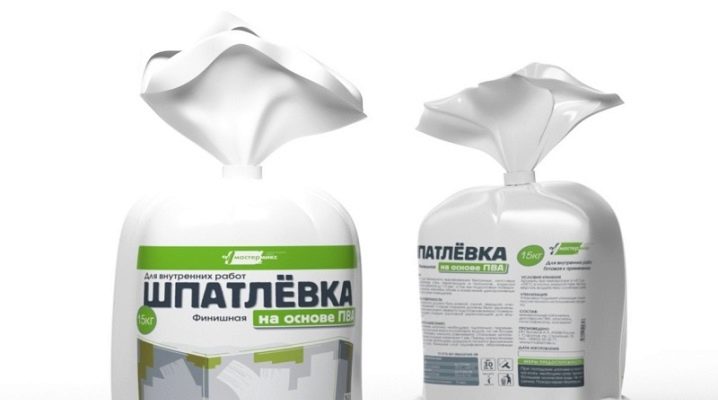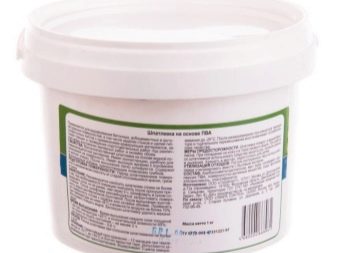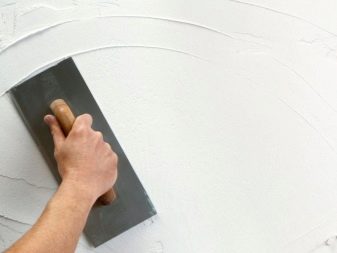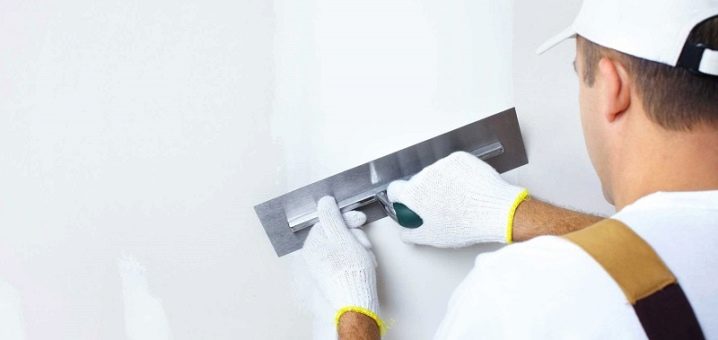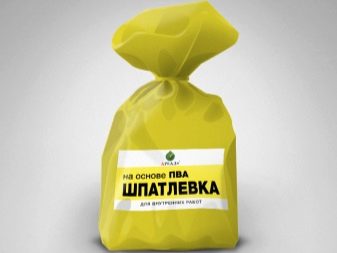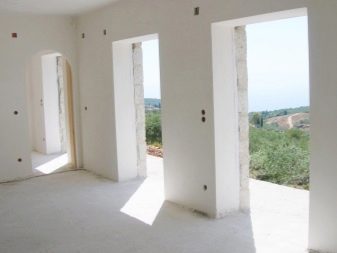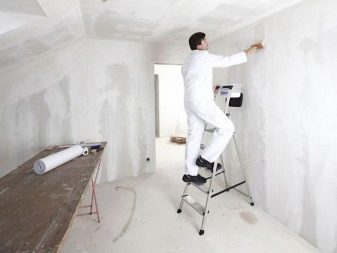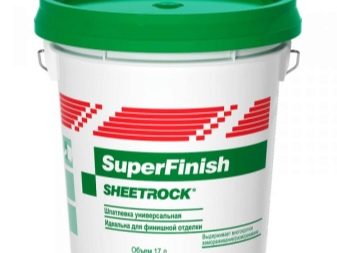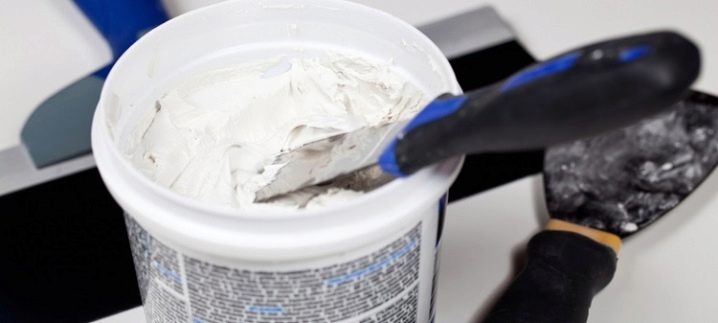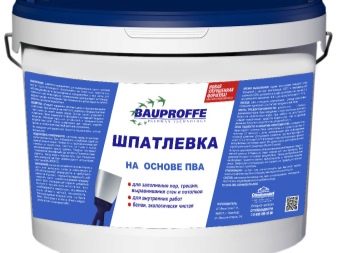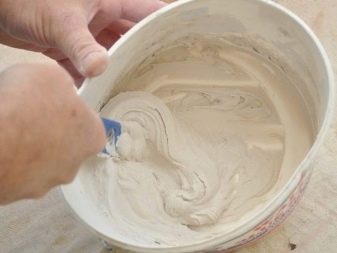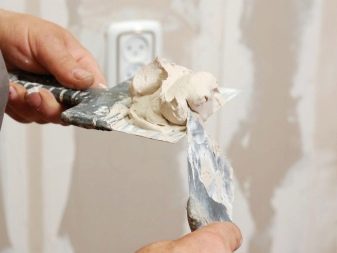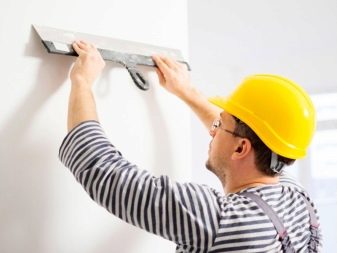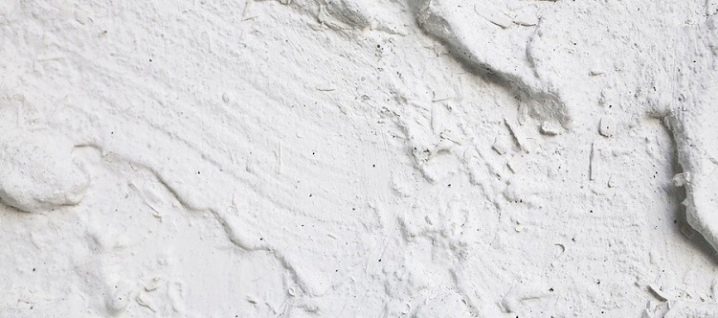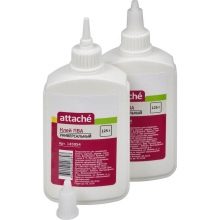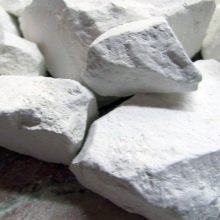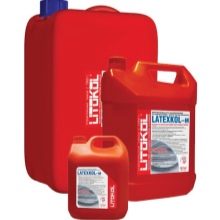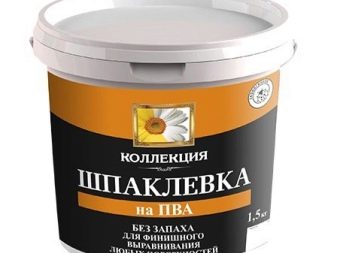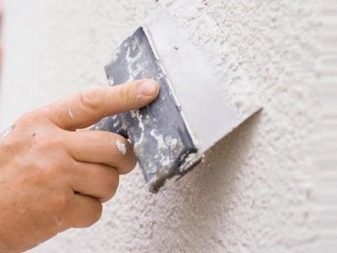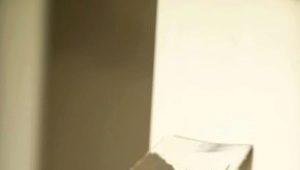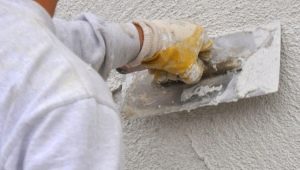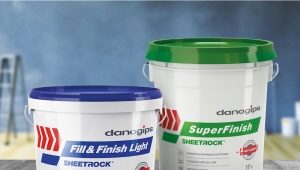Advantages of PVA based putty: where are they used and can it be made by hand?
There are various types of fillers, but the mixtures based on PVA are the most versatile. They have excellent adhesion to various building materials, while easy to use and affordable.
Features and composition
The main binder is polyvinyl acetate, which is also the well-known PVA glue (GOST No. 520-20 from 2003). This substance provides high adhesion. Chalk is used as a filler. Talc may be added to it, as it gives a fine fraction to create a smooth surface without potholes and bubbles.
To make the filler based on PVA easier to grind, plasticizers are added to its composition. For example, carboxymethylcellulose (CMC) gives softness, and after drying, grinding requires less effort.But latex-based plasticizers prevent cracking.
Also, to improve the quality of the tool includes antiseptic, protects against mold, and various additives, additives from insects and rodents can be used. Different percentage ratio of certain additives in the composition affects the quality of the putty itself and its performance characteristics.
Ready mixes are produced in plastic cans weighing from 0.5 to 3 kg. Dry putty produced in bags weighing up to 15 kg.
Advantages and disadvantages
The filler based on PVA has a fine fraction that gives the coating a perfectly smooth surface. Therefore, it is great for painting walls or pasting thin and textile wallpaper. It is universal, therefore it is used widely enough. Another important point: the treated walls have an exceptionally white color, which allows the use of light shades of materials in decorative decoration.
We can distinguish the following advantages of the composition:
- high degree of adhesion with virtually all known building materials;
- ease of application, does not require professional skills;
- affordability, low cost;
- economical consumption (up to 1 kg per 1 sq. m);
- quick drying (not more than a day);
- environmental friendliness (only natural ingredients in the composition);
- no unpleasant odors and toxic fumes;
- frost resistance;
- long stored dry without access of moisture;
- abrasion resistance.
At the same time putty has some drawbacks that limit its use. For example, because of its hygroscopicity, it is not used in rooms with high humidity (bath, sauna, basements, etc.). It is also not recommended to use this composition for ceramic tiles.
This putty can not be used to align the walls. Too thick layer can crack.
Application
PVA based filler is used exclusively for interior decoration with normal humidity. Due to its environmental properties, it is perfect for finishing the walls of children's and living rooms. Initially, there is a slight odor inherent in PVA glue, but as it dries it disappears and no longer appears.
Filling on the basis of PVA perfectly keeps on various surfaces: both concrete, and wooden, including a chipboard, and also steklomagnoviyevy and on polyfoam. It is possible to apply the composition to a previously painted surface, even if it is an oil paint.It fits perfectly on the drywall and seals the joints between the plates.
Dry mixes are most often used in the construction industry, since the dilution of the composition requires strict adherence to technology. Any change affects the quality of the finish. For home use, it is best to purchase formulations that are ready for use.
Due to the fragility of this material is not recommended to use to create decorative elements on the walls, they can easily break away. But this material is widely used for the manufacture of various handicrafts and volumetric decorative elements, in particular, in decoupage.
Application Method
Putty on the basis of PVA is applied only on the plastered surface or on top of the base. This type of putty can not be applied in a thick layer, so it is not suitable for leveling and sealing cracks. Surface finish should be carefully prepared.
- If there are greasy or oily spots on the surface, they are removed with organic solvents. Significant gaps and cracks can be sealed with a sealant with a construction gun. The base should always be cleaned from dust.As a primer, you can use diluted PVA glue with water in a ratio of 1 to 4.
- For applying putty requires a wide spatula, allowing you to cover a large area of the wall. In this case, the tool should be used clean, since the dried grains leave the grooves on the surface. Formulations based on PVA are usually not stratified, but it is recommended to mix them before applying. This can be done using a construction mixer and a special nozzle on the drill.
- Be sure to cover the floor. The solution of PVA is well absorbed, and it will be difficult to remove stains from the floor. For protection, you can lay out plastic wrap and secure it with masking tape. Despite the frost resistance of the putty itself, it is recommended to apply it in a warm room at a temperature of 20-30 degrees Celsius.
- Putty putty should be a thin layer of 0.5 mm. There can be up to 4 layers. Too thick to do is dangerous: the material cracks when dried and can break off in chunks. When the layer dries out, it is necessary to grind it with a polyurethane grater to get the perfect surface.Many builders reviews say that you can not wait for complete drying, so it will be much easier to grind.
- After complete drying, you can apply a decorative layer. If it is painting, you can additionally apply a primer of diluted PVA. Primer is not necessary for pasting with wallpaper, its function will be fulfilled by wallpaper paste.
How to make yourself?
Another advantage of PVA based putty is that it can be made at home. All the ingredients are easily purchased in hardware stores and departments of household chemicals.
As a filling, you can use chalk with the addition of talcum powder or baby powder, dust, sawdust or finished dry plaster putty. As a plasticizer, you can add CMC (dry wallpaper glue) or linseed oil. Sometimes household or liquid soap, laundry detergent and even casein paint are added to homemade putty.
Do not ignore additives for elasticity, otherwise grinding a dry surface will be quite time-consuming.
The proportional ratio of ingredients in the filler is as follows:
- 10% solution of PVA glue - 1 part;
- chalk or sawdust - 2.5 parts;
- plasticizers and other additives - 0.05 parts.
Dry components are first mixed, only then the solution is poured into the mixture of chalk and additives. If CMC is used, it must first be diluted. The resulting mixture in thickness should resemble sour cream. Too liquid can form overflows. Ready putty in a closed container is stored no more than 12 hours.
If putty is needed quite a bit, for example, for application to a limited area or use for decorative purposes, it is better to purchase an already ready version. Putty on PVA is inexpensive and more profitable to get ready than to mess with its manufacture. For example, the putty of the “Collection” brand costs about 100 rubles for 1.5 kg. Dry putty in bags can cost even less. The price is affected only by the presence of certain additives that improve the quality of the material.
How to putty the walls, see the next video.
